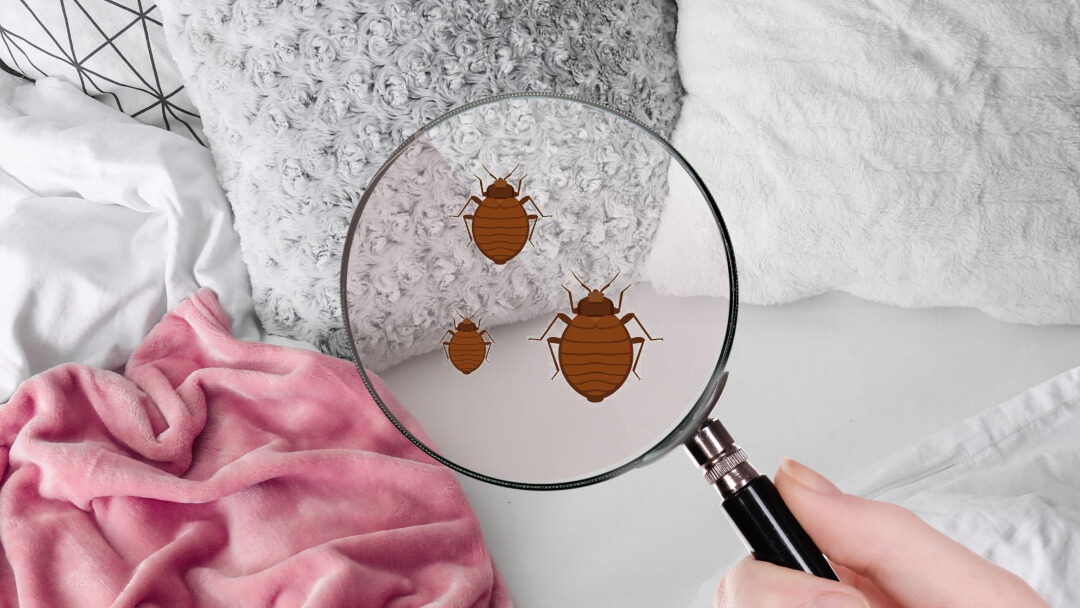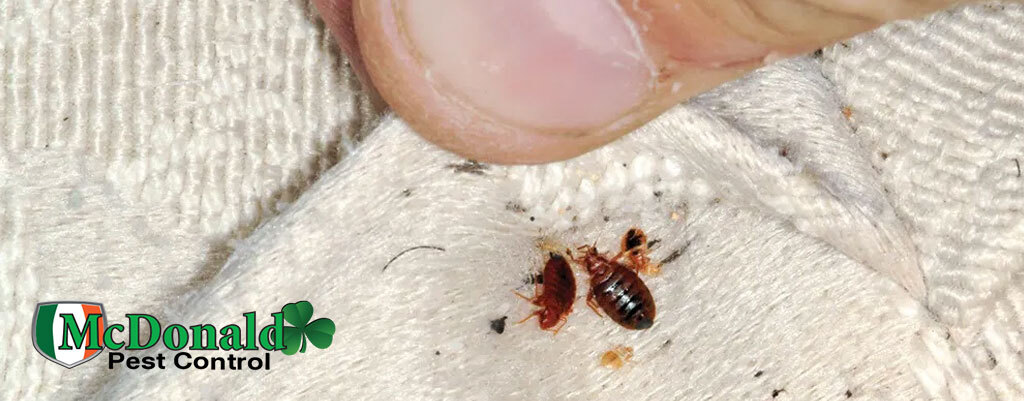How to Identify Bed Bug Bites and Prevent Future Infestations
How to Identify Bed Bug Bites and Prevent Future Infestations
Blog Article
Get Informed About the Sorts Of Pest Control Methods and Their Benefits for Homeowners
Recognizing the different pest control approaches available to home owners is necessary for efficient pest monitoring. Property owners that are knowledgeable can make strategic options that not only address pest problems however also boost the overall top quality of their living environment.
Chemical Bug Control Methods
Chemical pest control approaches are a critical part of integrated bug management methods for home owners seeking efficient solutions to pest invasions. These methods include the application of chemical materials designed to get rid of or hinder pests that endanger individual home, health and wellness, and convenience. Usual chemicals utilized consist of insecticides, herbicides, fungicides, and rodenticides, each tailored to target particular pests.
The key benefit of chemical pest control is its rapid effectiveness; numerous formulas supply prompt outcomes, lowering pest populaces significantly in a short time. Additionally, advancements in chemical formulas have caused products that are much more eco pleasant and have reduced poisoning degrees for non-target microorganisms when used properly.

Organic Pest Control Methods
All-natural insect control approaches have gotten importance as house owners look for much safer and extra sustainable options to typical chemical approaches. Organic parasite control techniques use all-natural predators, parasites, or microorganisms to take care of pest populations successfully. This approach is not just eco-friendly yet also reduces the danger of injury to non-target varieties, consisting of advantageous bugs and wild animals.
Among one of the most usual biological control methods involves introducing natural predators into the setting. As an example, ladybugs can be made use of to control aphid populations, while nematodes target soil-dwelling pests like grubs. Additionally, parasitoids-- organisms that survive on or within a host-- can be utilized to control particular insect types by laying eggs inside them, eventually causing their demise.
One more approach is using biopesticides, which are stemmed from natural materials such as minerals, microorganisms, or plants (bed bug exterminator). These items can efficiently target insects while posing minimal risk to pet dogs and people. Generally, biological insect control strategies offer property owners with an effective ways of pest monitoring that straightens with environmental principles, advertising a much healthier living atmosphere while decreasing dependence on artificial chemicals
Mechanical Insect Control Strategies
Mechanical bug control techniques encompass a range of methods that literally avoid or eliminate parasites without the use of chemicals. These techniques are specifically useful for homeowners looking for eco-friendly alternatives while guaranteeing the safety of their home.
One common approach is making use of obstacles, such as screens, internet, and catches, which protect against insects from getting in homes or particular locations. Setting up home window screens can successfully maintain insects out, while utilizing physical obstacles around yards can deter larger bugs like deer or bunnies. Additionally, mechanical traps developed for rats can record and remove these insects without the requirement for poisonous substances.
Another reliable strategy involves making use of vacuum cleaners and mops to get rid of pests directly from surfaces. Routine cleaning and upkeep can significantly minimize bug populaces by removing food resources and concealing places. Furthermore, employing devices like ultrasonic insect repellents can discourage different insects with noise waves that are unpleasant to them however inaudible to people.
Social Pest Control Practices
Social parasite control techniques concentrate on customizing the atmosphere and administration techniques to create problems that are much less for pest infestations. These practices are fundamental in keeping a well balanced environment and decreasing the reliance on chemical treatments. By modifying agricultural techniques, home owners can successfully prevent insects while promoting plant wellness.
One typical method consists of plant rotation, which interferes with the life process of bugs by changing the kinds of plants expanded in a particular location (bed bug exterminator). This not only minimizes pest populaces however additionally improves soil health. In addition, intercropping-- planting varied crops in closeness-- can puzzle pests and minimize their ability to situate their favored host plants
Water management is one more crucial facet of cultural techniques. Appropriate watering techniques can protect against standing water, which functions as a breeding place for mosquitoes and various other insects. Furthermore, preserving sanitation in and around the home, such as regularly eliminating particles and food waste, can considerably lower insect destination.
Incorporating these cultural practices right into a comprehensive insect monitoring approach allows house owners to develop a setting that naturally discourages parasites, thus enhancing the effectiveness of other control techniques while advertising lasting horticulture and landscape design.

Integrated Bug Management Approaches
Integrated Bug Monitoring (IPM) stands for an alternative method that incorporates various techniques to efficiently manage pest populaces while lessening environmental impact. This technique incorporates biological, social, physical, and chemical methods to accomplish sustainable parasite control. By examining pest populations and their all-natural opponents, IPM emphasizes surveillance and determining insects prior to carrying out control actions.
Among the core principles of IPM is making use of thresholds, which establish the degree of pest task that requires treatment. This makes sure that hop over to here treatments are used only when necessary, decreasing the dependence on chemical pesticides. Biological control approaches, such as introducing all-natural predators or bloodsuckers, operate in combination with cultural methods like crop turning and habitat adjustment to interfere with pest life cycles.
In addition, IPM motivates making use of least-toxic chemical choices when treatment is required, focusing on products that posture very little threat to non-target organisms and the atmosphere. For homeowners, embracing IPM comes close to not only improves the efficiency of insect monitoring but likewise promotes a much healthier living setting, fostering biodiversity and minimizing chemical direct exposure. Ultimately, IPM equips home owners to make informed decisions that stabilize parasite control with ecological responsibility.
Final Thought
In conclusion, recognizing the different insect control methods encourages property owners to make informed choices relating to pest management. Each strategy-- chemical, biological, mechanical, cultural, and incorporated pest monitoring-- provides distinct advantages that cater to various needs and choices.
Understanding the numerous insect control approaches offered to home owners is necessary for effective bug management.Chemical bug control methods are an essential component of incorporated pest administration strategies for property owners looking for effective options you can try these out to pest infestations. Generally, organic insect control methods provide property owners with a reliable means of insect administration that aligns with eco-friendly concepts, promoting a much healthier living atmosphere while minimizing dependence on synthetic chemicals.
Social bug control methods concentrate on customizing the atmosphere and administration strategies to produce problems that are less favorable to pest invasions.In verdict, recognizing the look at here now various bug control approaches encourages homeowners to make educated decisions relating to pest monitoring.
Report this page